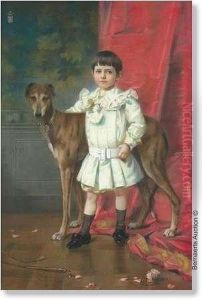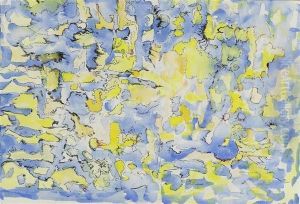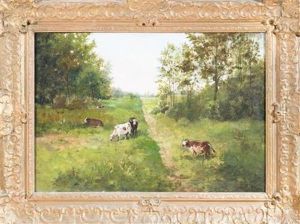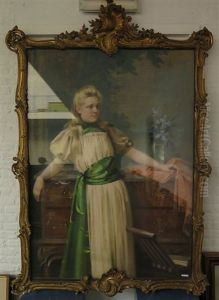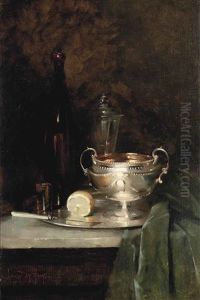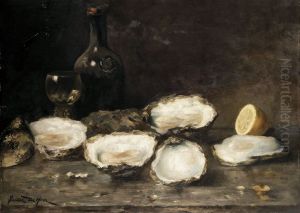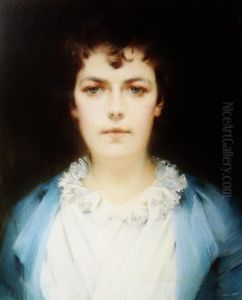Louise De Hem Paintings
Louise De Hem was a Belgian painter born on January 26, 1866, in Ypres, Belgium. She was primarily known for her portraits, genre scenes, and still-life paintings. Her work exhibits the influence of the Realist and Impressionist movements that were prevalent during her time. De Hem's artistic journey began under the guidance of her stepfather, Théodore Ceriez, who was also an artist and provided her with her initial training.
After her initial training with Ceriez, De Hem furthered her artistic education by studying at the Académie Royale des Beaux-Arts in Brussels. She married her cousin, the painter Henri-Gustave Josselin, in 1893, and together they moved to Paris. There, she continued to develop her artistic skills and was exposed to the vibrant Parisian art scene, which had a noticeable impact on her work.
Louise De Hem achieved recognition for her detailed and sensitive portrayals of subjects, often capturing the nuances of light and shadow in her compositions. Despite the challenges faced by women artists at the time, she managed to exhibit her work at various salons and expositions, gaining acclaim. Her participation in these exhibitions included showing her work at the prestigious Paris Salon, where she received honorable mentions for her submissions.
De Hem’s paintings often depicted women and children, and she drew inspiration from her immediate surroundings, including her own family life. Her style was characterized by a delicate use of color and a focus on the intimate moments of everyday life. She was also known to have produced a number of floral still lifes, which were popular among collectors during that era.
Louise De Hem's career was relatively short, as she passed away at the age of 56 on October 4, 1922, in Ixelles, Belgium. Despite her death, her work continues to be appreciated for its contribution to Belgian art and its reflection of the turn-of-the-century art movements. Her paintings can be found in various museums and private collections, preserving her legacy within the art world.
